Variety Development Strategy
Variety Development Strategy
New selections are tested in preliminary yield trials at Namulonge and MUARIK and later at various research stations in advanced yield trials and farmers’ fields, where they displayed considerable resistance to ASR and gave acceptable yields under ASR pressure.
Breeding Process
On-station trials were conducted at the National Crops Resources Research Institute (NaCRRI) at Namulonge in Wakiso, Makerere University Agricultural Research Institute Kabanyolo (MUARIK) in Wakiso, Nakabango Variety Trial Centre (NVTC) in Jinja, Bulindi Zonal Agricultural Research and Development Institute (BuZARDI) in Hoima, Ngetta Zonal Agricultural Research and Development Institute (NgeZARDI) in Lira, Abi Zonal Agricultural Research and Development Institute (AbiZARDI) in Arua district and District Agricultural Training and Information Centre (DATIC) at Iki-Iki in Budaka and Mubuku irrigation scheme in Kasese (Table 3).
On-farm trials were conducted at more than 14 districts in the country (Figure 4). Few elite lines (less than 5) were considered for trials in farmers’ fields. Soybean rust was a major breeding objective for these trials, farmers’ major concerns were yields of the test materials that indeed varied by farmer location (Figures 4 and 5). The variety development efforts were supported by various development partners and the Government of Uganda (GoU) in particular, the Vegetable Oil Development Project (VODP) of the Ministry of Agriculture Animal Industries and Fisheries (MAAIF) which have been very instrumental in providing direct financial support to the soybean rust resistance breeding efforts. Other major donors are Alliance for a green revolution in Africa (AGRA) and the Regional Universities Forum for Capacity Building in Agriculture (RUFORUM).
After passing variety release tests for distinctness, uniformity, and stability (DUS), the first elite lines with resistance to ASR were formally released in 2004 as Namsoy 4M (NG 10.4) and Maksoy 1N (TGX 1835-10E). The probability of farmers accepting these genotypes is demonstrated in the Figures 5 and 6.
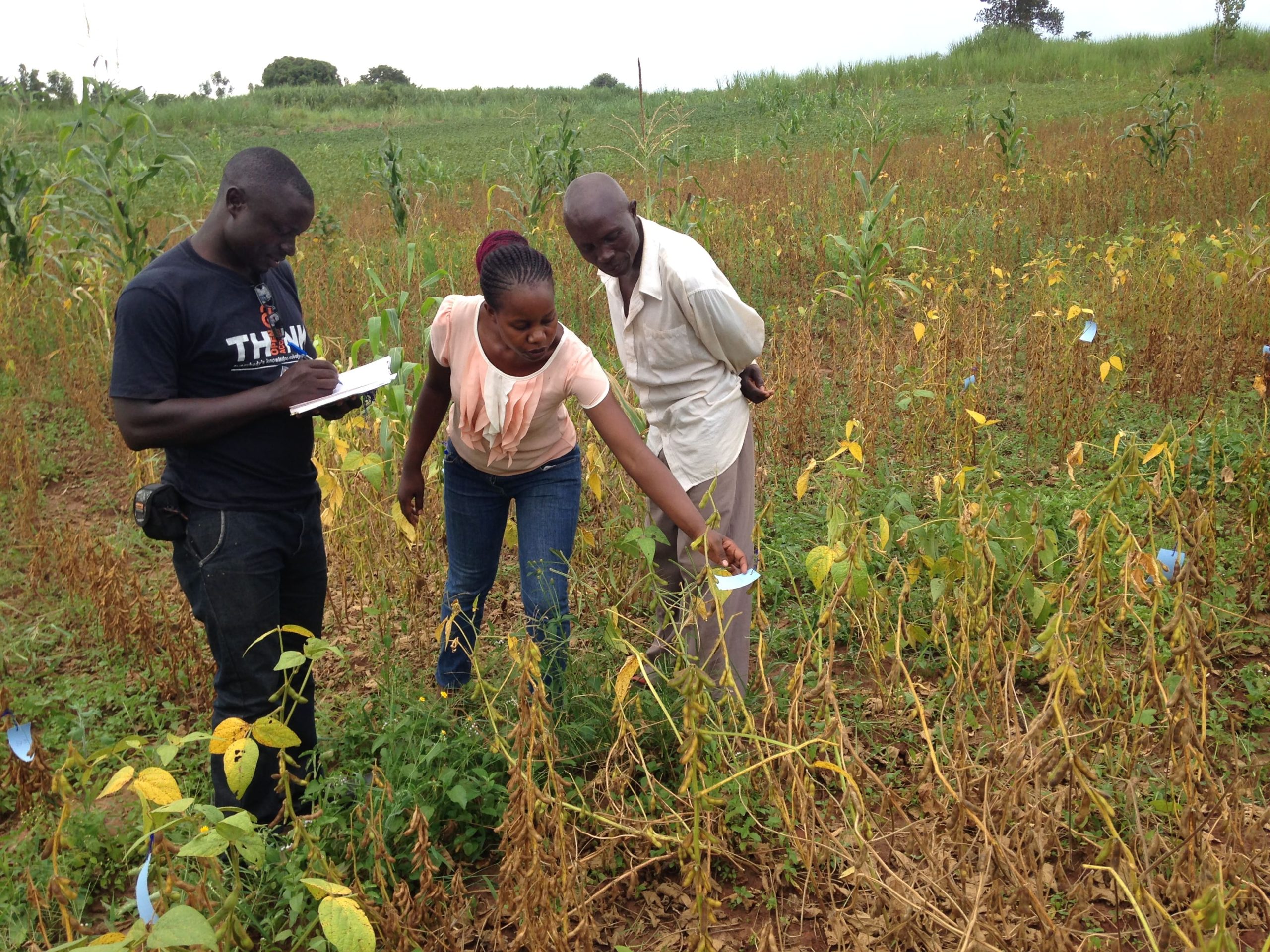
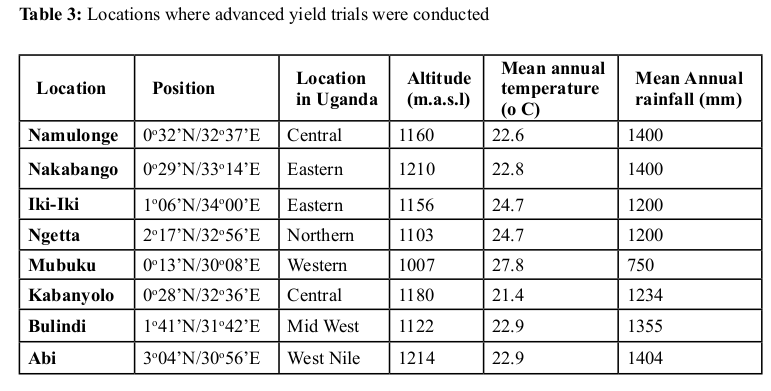

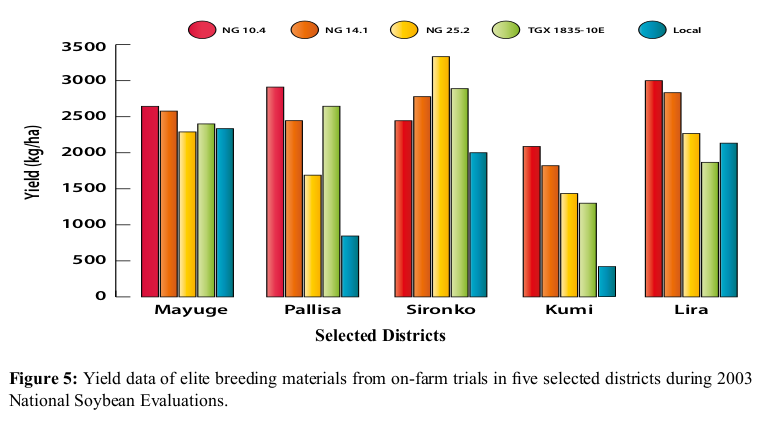
Two new soybean varieties were released in 2004, after national evaluations namely Namsoy 4M (derived from Nam 2 X GC 00138-29) and Maksoy 1N, a selection from TGX 1035 10E. Additional varieties; Maksoy 2N and Maksoy 3N were released in 2008 and 2010 respectively. Thus, soybean acreage steadily increased from 144,000 to 155,000 hectares, while the annual production increased from 158,000 to 181,000 MT between 2004 and 2009 (UBOS, 2010). In 2013, two other varieties Maksoy 4N (BSPS 48A-27) and Maksoy 5N (NG 14.1-24) were released. Maksoy 4N is a line developed from Duiker x GC 00138-29 progenies while Maksoy 5N is derived from a cross of Nam 2 x GC 00138-29 and Maksoy 6N from Nam 2 x GC 00138-29 (Table 4). In 2017, Maksoy 6N was released and its traits are summarized in Appendix 2. Disease scores of the breeding lines and elite genotypes developed by the Centre are presented in Table 5 and Appendix 7. The protein and oil content of these varieties is presented in Table 6, while more detailed description is in Appendix 2. Yield and other agronomic traits of some of the elite lines are presented in Appendices 2-8.
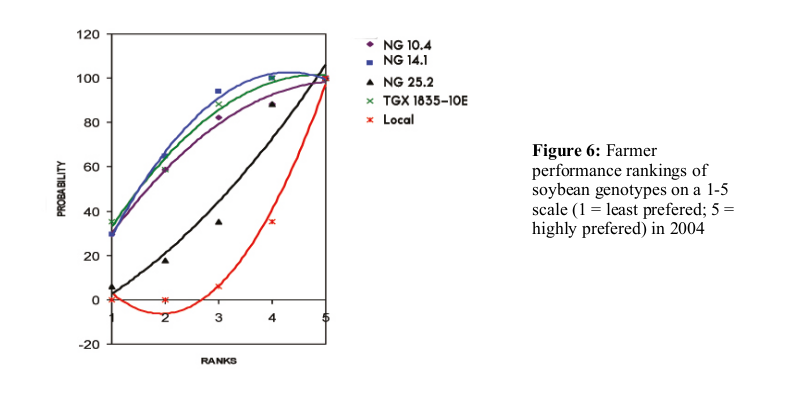
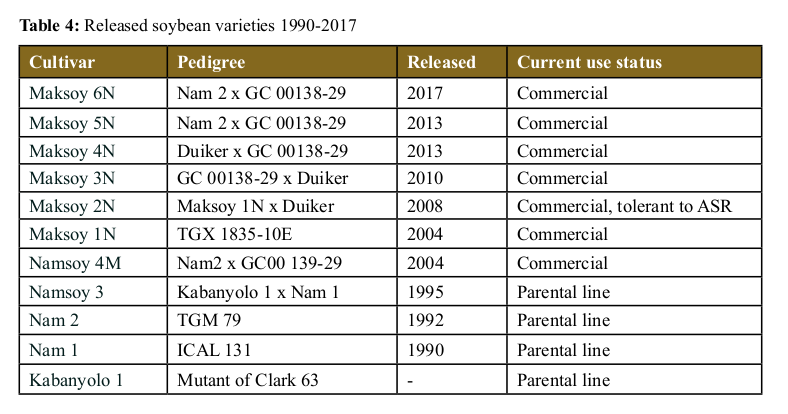

Appendices and other details can be found HERE
